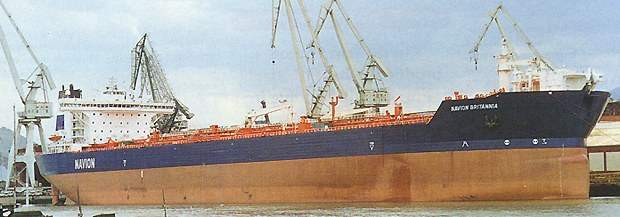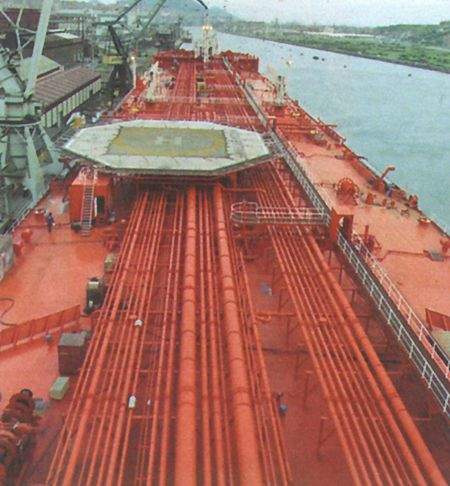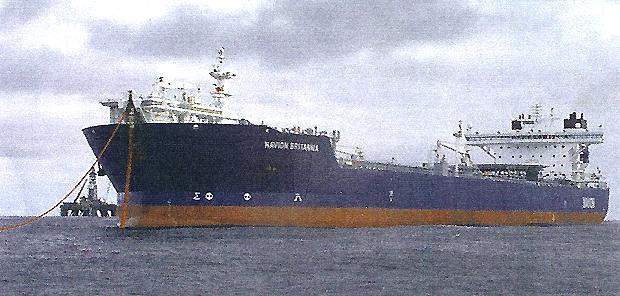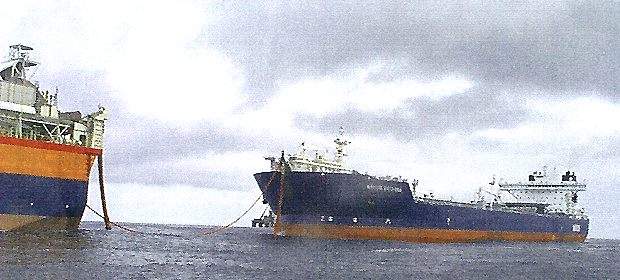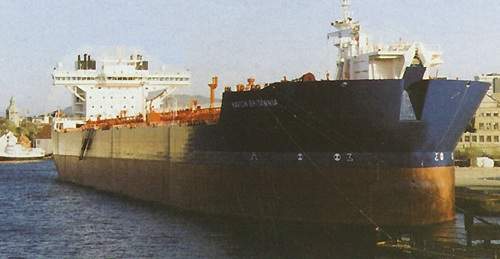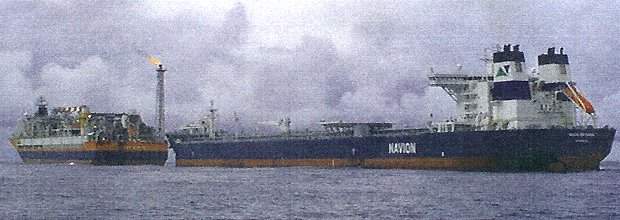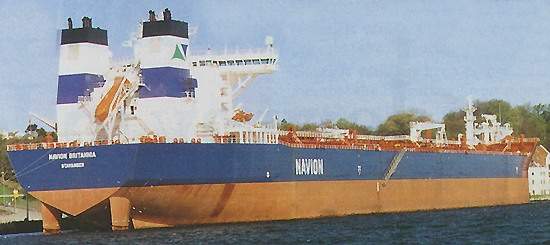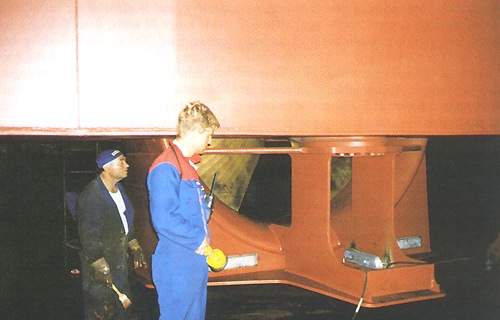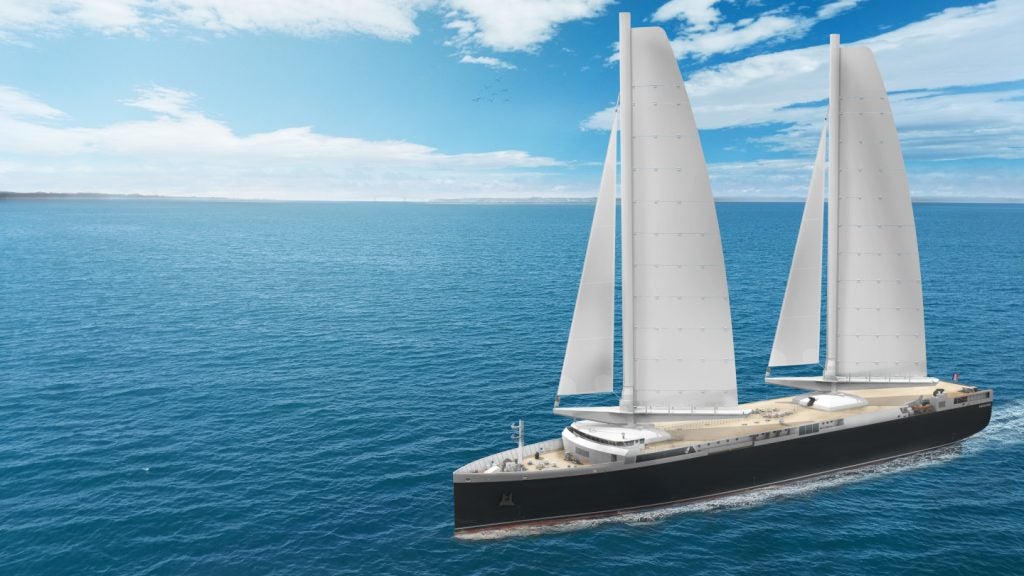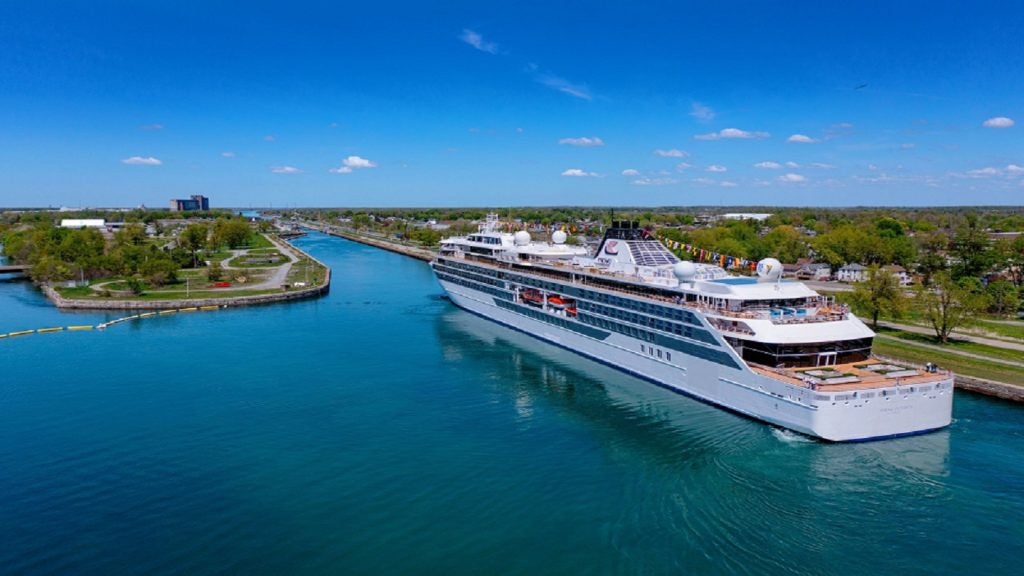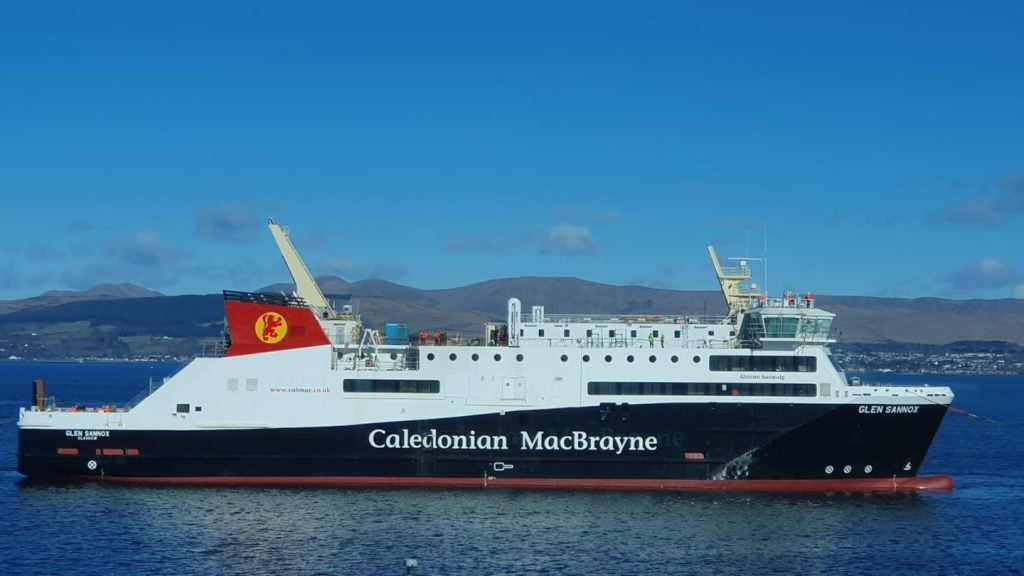The Navion Britannia is the seventeenth shuttle tanker in Navion ASA’s fleet and the first of a series of three ordered at the Sestao yard of Izar. Navion ASA is a Norwegian company set up by Statoil and the Rasmussen Group.
Aside from the sophisticated Bow Loading and Submerged Turret Loading (STL) cargo systems commonly found on the most modern vessels of this type, Navion Britannia is equipped with an STP (Submerged Turret Production) system, making the tanker not only able to carry out submerged loading operations but also offshore oil production.
DESIGN
Navion Britannia has an overall length of 265m, a moulded breadth of 42.5m and a 22m moulded depth. Its design deadweight is 120,000dwt and it has a design draught of 15m. The tanks on the Navion Britannia have a cargo capacity of 139,500 cubic m.
The vessel is provided with double-skin and double-bottom along the cargo space, with two longitudinal bulkheads and the correspondent transverse bulkheads to form 18 cargo tanks and two slop tanks, as well as wing and double-bottom tanks for water ballast. The design also includes three loading tanks per section to reduce the release of volatile organic compounds (VOC) during loading. The cargo tanks are prepared to transport two 50/50% cargo separations.
CARGO SYSTEMS
Crude oil can be loaded into the Navion Britannia from a variety of offshore facilities or from a conventional oil terminal through the midship manifold. The vessel can be moored at offshore facilities in up to 4.5m significant wave height and 25/30 knots wind speed.
Navion Britannia is equipped with the most advanced loading systems, combining a Bow Loading (BL) system and the ship’s part of the Submerged Turret Loading (STL) system. The specific loading/discharging flows are 8,000m³/h for BL and STL systems and 12,000m³/h for loading/discharging manifold. Two longitudinal main suction/discharge lines are arranged, one for each cargo segregation.
Aluminium heating coils are installed on the bottom of the cargo and slop tanks. Two Consilium Marine crude oil cleaning (COW) lines are situated on deck. An inert-gas plant with a total capacity of 15,000m³/h is also provided. A Saab tank radar system measures the ullage in the tanks, and the Permea inert gas pressure and temperatures at three levels.
PROPULSION
Navion Britannia’s main propulsion is provided by twin two-stroke Manises MAN B&W 6L60MC slow-speed diesel engines, with an mcr of 15,600hp (11,520kW) at 123rpm. Each drives a 6m diameter Wärtsilä Wichman four-blade controllable-pitch propeller. Two symmetrical engine rooms, divided by an A-60 fire-resistant watertight longitudinal bulkhead, house the engines.
The ship uses two Wärtsilä 6R32LNE generators producing 1,600kW at 750rpm and two Wärtsilä 8R32LNE generators each producing 3,250kW at variable rpm. These are complemented by a 500kW, 690V 50Hz D2842 LE emergency engine from MAN-DEMP.
Two highly manoeuvrable schilling-type rudders are driven by two rotary-vane electro-hydraulic steering gears. The dynamic positioning system, controlled and monitored from the bridge, is based on two tunnel/retractable CP FR100LTC 2750 bow thrusters each one capable of 2,200kW at 475rpm and one retractable CP, four-bladed FR100LC2600 stern thruster of 1,400kW at 475rpm.
AUTOMATION AND CONTROL
The Navion Britannia is equipped with a BridgeLine 2020 integrated bridge supplied by Kongsberg Norcontrol, which includes Norcontrol’s Automatic Navigation and Track-keeping System (ANTS), a DataBridge 2000 BL radar/ARPA/ECS and INS control system and separate Nucleus 5,000TM radar display. It has a Norcontrol SeaMap ECDIS and PL2 remote route planning system. The bridge also contains an AP2000 autopilot with track-keeping functions, Skipper echo sounder, Sailor GMDSS, Taiyo weather facsimile and an Aanderaa weather station.
The loading on the Navion Britannia is automated, with several independent integrated systems, including integrated control and monitoring systems, cargo control system (CCS), main engines remote control system (MERCS), dynamic positioning system (DP), thrusters control system (TC) and integrated navigation system, besides the mentioned loading/discharging (BL and STL) systems.

